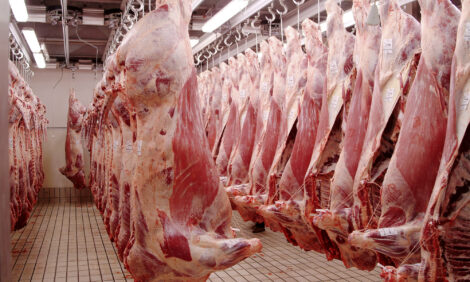



Selecting Replacement Heifers
UK - Breeding or purchasing high-quality replacement heifers is an essential investment for suckled calf producers.Replacement heifers provide the genetic building blocks for future generations, therefore farmers should carefully consider which females they breed from.
Whether buying heifers or breeding them on farm, it is vital they calve for the first time early in the calving period. For home-bred heifers, this means they need to be born early in the season to reach target weights for service.
Calf growth rate to weaning is a good indicator of the dam’s milking ability and the calf’s genetic potential for growth. At this stage, it is also important to assess the heifer’s structural soundness and temperament. Dam mature size is another area of consideration, as large cows need more feed to maintain body condition and fertility, so farmers should select heifers from cows with moderate frame size.
The period between weaning and breeding is crucial if heifers are to successfully calve at two years of age. While calving heifers at two years old has the potential to increase calf production over their lifetime, this relies entirely on maiden heifers and first calvers being managed well.
To achieve well-grown heifers at service, it is crucial that farmers analyse winter forages and formulate rations in order to keep heifers growing steadily through the winter. Weighing heifers mid-winter will help check that liveweight targets are being achieved.
Likewise, first-calved heifers may well be leaner than the rest of the herd at drying off, so if possible they should be grouped separately and fed a higher-quality ration. This will help ensure they calve in the right body condition and get in calf again.
The onset of puberty is largely determined by liveweight rather than age and therefore heifers should be managed to reach 65 per cent of their mature weight at service. Assuming heifer calves grow at around 1kg/day while suckling their dam, subsequent growth rates to bulling need to be approximately 0.7-0.8kg/day, depending on breed type.

Example growth targets for replacement heifers aiming to calve at 24 months of age
In summary, it is important for farmers to select heifers that:
- Come from the best cows in the herd and are sired by bulls with strong maternal traits
- Are born early in the calving season
- Are grown well and are ready to breed at 15 months of age (65 per cent of mature weight)
- Conceive early in the breeding season
- Are structurally sound and of moderate frame size
- Have quiet temperaments
For further information, read the BRP manual Managing Replacement Heifers for Better Returns, available on the AHDB Beef & Lamb website.
These comments can be used as direct quotes from AHDB Beef & Lamb scientific officer (beef) Sarah Pick, who can be contacted on 024 7647 8892. Alternatively, call Jo Biggs, AHDB Beef & Lamb senior marcomms manager on 024 7647 8836.
Information is also available online at beefandlamb.ahdb.org.uk.
TheCattleSite News Desk


